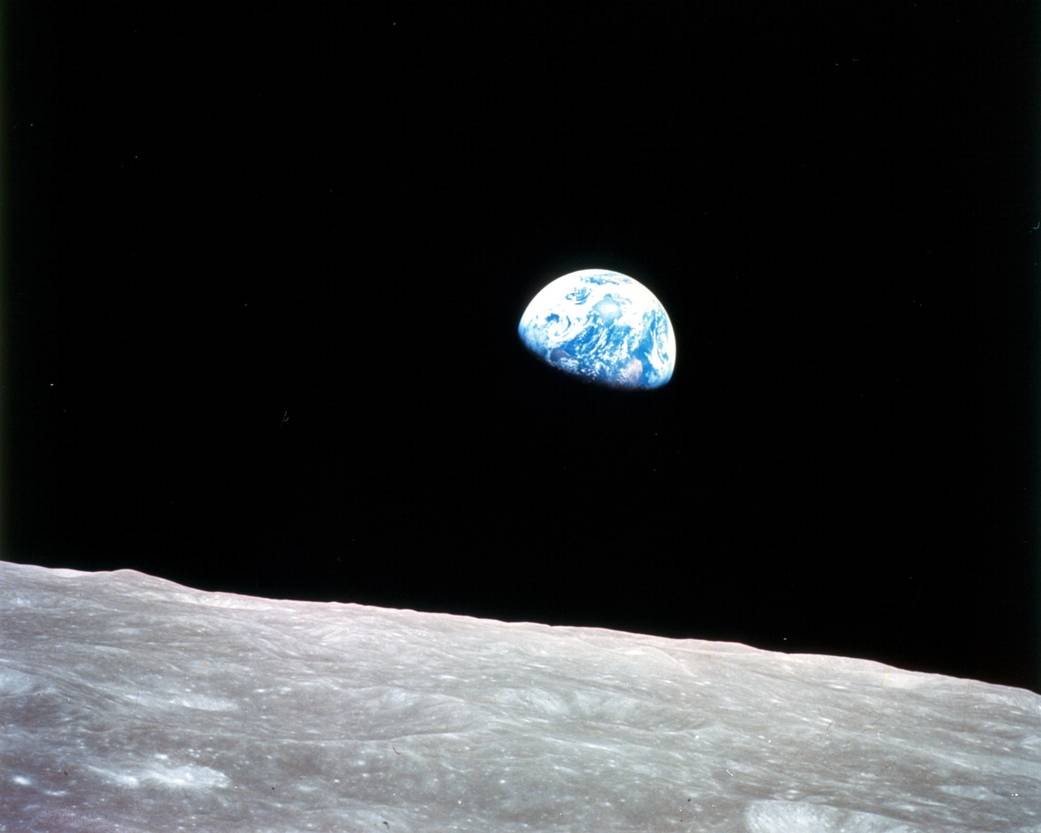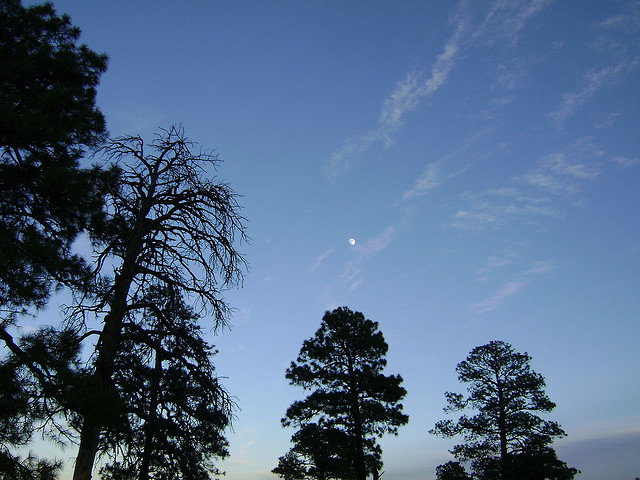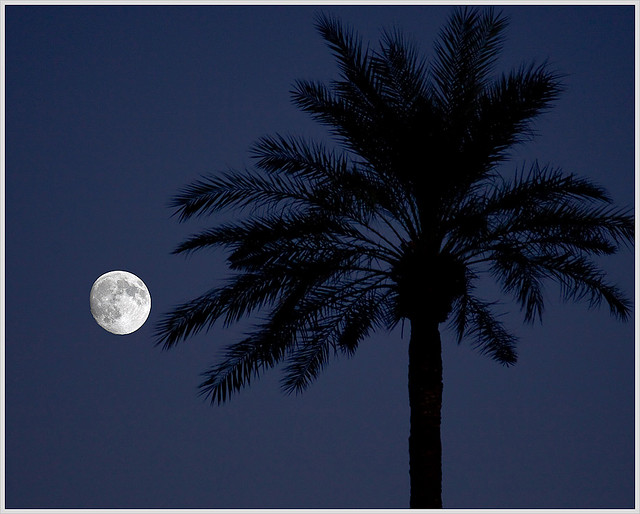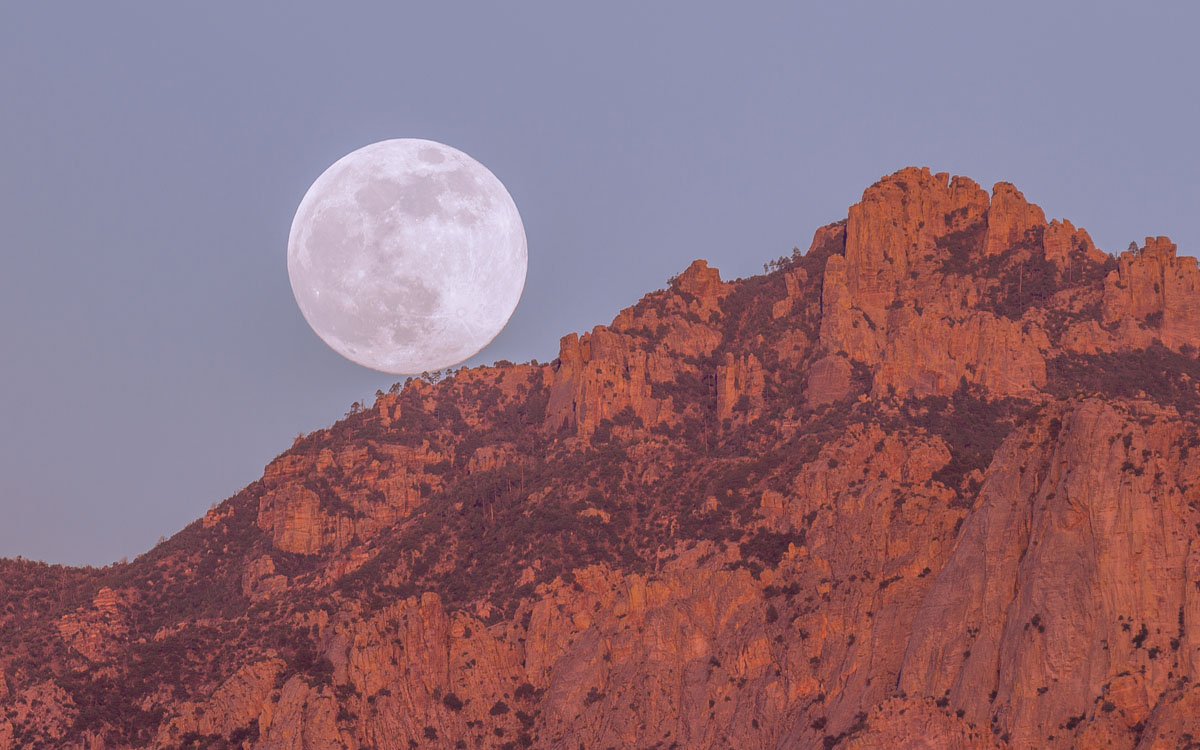It looks like you're using an Ad Blocker.
Please white-list or disable AboveTopSecret.com in your ad-blocking tool.
Thank you.
Some features of ATS will be disabled while you continue to use an ad-blocker.
share:
originally posted by: rickymouse
originally posted by: 3danimator2014
originally posted by: rickymouse
I would guess number one, but they may all be fake. Our atmosphere actually magnifies the moon but I do not think the moon actually has an atmosphere at all that would magnify earth.
The point is that the earths atmosphere acts like a lens.the various thicknesses the light travels through from sunrise go zenith emulating various lenses.
Just like the various lenses used on these missions
So, if they did use a lens, how come I can't recognize the land mass in the second photo when comparing it to pictures of land masses on the earth. I tried spinning the image many ways to compare it in my mind, it just does not seem to match anything I could find.
Ok, I found the angle, but some parts do not seem to match well. Could be the angle that causes the distortion though. I finally found one where the area is covered from a similar angle. I still think the second one is made up, it looks like some modified representations on the net.
Antarctica is at the 10 o clock position Polar orientation, south to left, north to right
originally posted by: Tekaran
I've been having problems with what's real vs what's fake when it comes to Nasa.
If I'm reading these correctly, these are legit pictures on Nasa's website. If the position of the Earth as it relates to the Moon varies that much, I'm calling BS....
...So which is it Nasa? what is the real distance from the moon to the earth in these photos? What do you think ATS?
Before you call BS, consider the focal lengths of the lenses used.

If you look at the camera details for the above image (which can be found on other Apollo photo archive sites), the lens used for this image had a focal length of 60 mm.

The camera lens used for this image above had a focal length of 250 mm.
...so the longer lens (250mm lens compared t the 60mm lens) would create more of a "zoom" factor, thus making the Moon look bigger.

This one above is a composite -- and it is even advertised by NASA as a composite. Being a mosaic constructed of a composite of several photos put together, you can't tell how closely the camera lens was "zoomed in" to the Earth.
Let's look at these images of the Moon from Earth. The Moon looks to be different sizes due to the camera lenses' focal lengths:
Here is an taken with a normal consumer camera (or camera-phone) with standard "non-telephoto" settings:

The next one uses a longer focal length tos zoomed in a little closer:

This one is zoomed in a little closer:

And this one used an even longer focal length to zoome even closer:

edit on 4/5/2017 by Soylent Green Is People because: (no reason given)
edit on 4/5/2017 by Soylent Green Is People because:
(no reason given)
originally posted by: Soylent Green Is People
originally posted by: Tekaran
I've been having problems with what's real vs what's fake when it comes to Nasa.
If I'm reading these correctly, these are legit pictures on Nasa's website. If the position of the Earth as it relates to the Moon varies that much, I'm calling BS....
...So which is it Nasa? what is the real distance from the moon to the earth in these photos? What do you think ATS?
This one abive is a composite -- and it is even advertised by NASA as a composite. Being a mosaic constructed of a composite of several photos put together, you can't tell how closely the camera lens was "zoomed in" to the Earth.
The Earth in the resulting composite image is from a NAC shot, and I think we can find some information about that camera's focal length and, therefore, how much "zoomed" the Earth is.
Each NAC has a 700 mm focal length Cassegrain (Ritchey-Chretien) telescope that images onto a 5064-pixel CCD line-array providing a cross-track field- of-view (FOV) of 2.86 degrees.
pds.nasa.gov...
700 mm is a very strong zoom.
edit on 4-5-2017 by wildespace because: (no reason given)
a reply to: wildespace
Yeah -- but being a "beauty image" (an image meant to be artistic rather than scientific), there may have also been some cropping involved.
The first two apollo images had no cropping of the frames. Therefore the differing sizes of the Moon were completely due to the 60 mm focal length of the lens used compared to the 250 mm focal length of the lens used.
Yeah -- but being a "beauty image" (an image meant to be artistic rather than scientific), there may have also been some cropping involved.
The first two apollo images had no cropping of the frames. Therefore the differing sizes of the Moon were completely due to the 60 mm focal length of the lens used compared to the 250 mm focal length of the lens used.
edit on 4/5/2017 by Soylent Green Is People because: (no reason given)
originally posted by: HawkeyeNation
What I don't understand is how the Earth is so perfectly round. I thought we were supposed to be more oblate?
The oblate shape of the Earth is very real, but not noticeable with the naked eye.
Here are the numbers:
The diameter at the poles (the "up and down" diameter) is about 12,715 km, or about 7629 miles
The equatorial diameter (the "across" diameter) is about 12,755 km, or about 7653 miles.
So the different between the "height" and "width" of the earth is roughly 40 km or roughly 24 miles over more than 7600 miles (or a difference of 0.03 % over that distance).
Actually, the widest part of the earth is a little south of the equator. The diameter of the Earth taken there would be about 45 km (27 miles) greater than the pole-to-pole diameter. But that difference is still only 0.03%.
...And you are not going to notice that 0.03% difference with your eyes
edit on 4/5/2017 by Soylent Green Is People because: (no reason given)
a reply to: HawkeyeNation
what i dont understand is why to think you should be able to see the difference in polar and equitorial diameter ?
what i dont understand is why to think you should be able to see the difference in polar and equitorial diameter ?
The second photo is from orbit, and way more zoomed in.
The terrain looks similar, but are mountains not small hills.
The terrain looks similar, but are mountains not small hills.
originally posted by: wildespace
originally posted by: 3danimator2014
originally posted by: rickymouse
I would guess number one, but they may all be fake. Our atmosphere actually magnifies the moon but I do not think the moon actually has an atmosphere at all that would magnify earth.
The point is that the earths atmosphere acts like a lens.the various thicknesses the light travels through from sunrise go zenith emulating various lenses.
Just like the various lenses used on these missions
Sorry, but I'll have to correct you on that. The atmosphere's thickness has no appreciable effect on the apparent size of the Moon or the Sun. You can verify that by taking photos of the Moon when it's high up or low on the horizon; the Moon will be the same size on both photos.
The Moon or the Sun only look bigger to us when low on the horizon due to an optical illusion.
The size of the Moon does vary slightly when seen from the ground, but only because of its slightly elliptical orbit, such as when we get "super moons".
I have no problem with being corrected by you Wildespace....but im pretty sure that its the earths atmosphere making the sun bigger the lower it is in the sky. Makes sense no? Air can act like a lens, so the more air light has to go through, the more pronounced the effect. I've seen the moon rising over the sea. And im fairly certain it was bigger.
That being said, you know your sh*t, so maybe you are right...
a reply to: andy06shake
please define " fake " - have you actually read the official caption for this pic - and its provenance ?
please define " fake " - have you actually read the official caption for this pic - and its provenance ?
originally posted by: Soylent Green Is People
Before you call BS, consider the focal lengths of the lenses used.
And this one used an even longer focal length to zoome even closer:
This is the best explanation of what is going on yet. Thanks for this. So what you are saying is a camera lens can zoom in on just an object, but leave everything else as normal? That is a cool effect indeed, but again, it's not a real image. Or at least in my opinion.
Next time i'm taking photos of my wife, I will just zoom in on her chest, so they look bigger. When people ask are those real, I can say yep!
Concidering the Moon is 3400 km in diameter, and the Earth 12,700 km (making the Earth 3.7 times larger), shouldn't the Earth appear 3.7 times larger
from the Moon as the Moon does from the Earth? After doing a quick calculation, I see no problem in assuming this 3.7 ratio can be directly put on the
Moon's
angular diameter, to get 31*3.7=114 arcmin, just under 2 degrees. To me, that seems like a pretty significant magnification on it's
own, and that's without concidering any focal length at this point. I'dd imagine it to be YUUUUGE, 3.7 times the size of the Sun in the Sky.
How exactly does the focal length affect the size of the Moon on pictures? From the examples given in this thread (aswell as the 3 images of the Earth in OP), I assume the longer the focal length, the larger they get, though is the same for every lens?
If you were to recreate the first picture on Earth, with the Moon in the background in the same spot, and an astronaut on the foreground (at the same distance), using a 60mm lens, the Moon should be exactly 3.7 times smaller?
This seems like a reasonable thing I could find out myself, given my train of thought is correct.
How exactly does the focal length affect the size of the Moon on pictures? From the examples given in this thread (aswell as the 3 images of the Earth in OP), I assume the longer the focal length, the larger they get, though is the same for every lens?
If you were to recreate the first picture on Earth, with the Moon in the background in the same spot, and an astronaut on the foreground (at the same distance), using a 60mm lens, the Moon should be exactly 3.7 times smaller?
This seems like a reasonable thing I could find out myself, given my train of thought is correct.
I think i remember reading that the nearest and farthest the Earth should look from the moon is 40 something % and 55 %
of the total view that you can see from the moon , the Earth being 6 times bigger
en.wikipedia.org...

of the total view that you can see from the moon , the Earth being 6 times bigger
en.wikipedia.org...

originally posted by: Vechthaan
Concidering the Moon is 3400 km in diameter, and the Earth 12,700 km (making the Earth 3.7 times larger), shouldn't the Earth appear 3.7 times larger from the Moon as the Moon does from the Earth? After doing a quick calculation, I see no problem in assuming this 3.7 ratio can be directly put on the Moon's angular diameter, to get 31*3.7=114 arcmin, just under 2 degrees. To me, that seems like a pretty significant magnification on it's own, and that's without concidering any focal length at this point. I'dd imagine it to be YUUUUGE, 3.7 times the size of the Sun in the Sky.
Yes -- the Earth in a photo taken from the moon will look bigger than the Moon in a photo taken from Earth, assuming the same camera and focal length is used for both.
You also need to consider that the Moon in a picture from earth (and the earth in a picture from the moon) taken with a normal consumer camera that we are all accustomed to seeing could look smaller than it appears to our eyes in real life.
Here's an example of the moon taken with a consumer digital camera or a camera-phone, which on average has a lens with a practical focal length of about 30 mm. The moon is that small white blob in the middle of the image.

To the person who took this image, the moon probably looked a lot bigger in person than it did in the image. So this phenomenon needs to be considered when trying to make apples to apples comparisons of the size of the Earth in an NASA Apollo picture with a 60 mm or 250 mm lens and what you think the apparent size of the moon would be as seen from Earth with your eyes.
edit on 4/5/2017 by Soylent Green Is People because: (no reason given)
a reply to: Soylent Green Is People
Right, I understand the photo comparison to eye difference, but photo to photo comparism there should be no problem?
If I asked a friend, we go out in a field on a night the Moon is at similar height, we position ourself as in the photo, use a 60mm lens and zoom to match the picture (use the astronaut for calibration), the Moon should be exactly 3.7 times smaller?
And I could do this process for any Earth-from-Moon picture?
I realize there's perhaps going to be some issues with the inclination of the Moon (if the picture was taken on a certain spot on the moon, on a certain time perhaps even, I need to be on a certain spot on the Earth, at a certain time), orbits and tilts and such, but I like to keep my heavy math under wraps, stuff for later.
Edit: I suddenly realize that I could perhaps even use a 3D model (given there's no atmospheric conditions on the Moon anyway), those things are crazy these days.
Right, I understand the photo comparison to eye difference, but photo to photo comparism there should be no problem?
If I asked a friend, we go out in a field on a night the Moon is at similar height, we position ourself as in the photo, use a 60mm lens and zoom to match the picture (use the astronaut for calibration), the Moon should be exactly 3.7 times smaller?
And I could do this process for any Earth-from-Moon picture?
I realize there's perhaps going to be some issues with the inclination of the Moon (if the picture was taken on a certain spot on the moon, on a certain time perhaps even, I need to be on a certain spot on the Earth, at a certain time), orbits and tilts and such, but I like to keep my heavy math under wraps, stuff for later.
Edit: I suddenly realize that I could perhaps even use a 3D model (given there's no atmospheric conditions on the Moon anyway), those things are crazy these days.
edit on 4-5-2017 by Vechthaan because: (no reason given)
Stellarium allows you to position yourself on the moon, and this is the view at the Apollo 17 site with the date and time to be the same as the
photograph.


If you take a photo of someone with a fisheye lens, that's 180 degrees of background objects squeezed into the photo. Things far away will look
tiny.
Or, try take a photo of an airplane at the airport and the moon will look tiny in the background.
But zoom in on a plane flying and the moon will be larger than the plane.
Or, try take a photo of an airplane at the airport and the moon will look tiny in the background.
But zoom in on a plane flying and the moon will be larger than the plane.
Here's the GIF I like to post whenever the argument "I don't understand basic photography so everything is fake" is used.
One setup, one barn, one truck, one camera, multiple lenses s398.photobucket.com...
QED, humans have never been to Earth.
One setup, one barn, one truck, one camera, multiple lenses s398.photobucket.com...
QED, humans have never been to Earth.
new topics
-
Paramilitary Leaks - John Williams
Whistle Blowers and Leaked Documents: 4 hours ago -
Some sausage, some chicken, some sauce, some onions and some garlic...and some peppers!
Food and Cooking: 5 hours ago -
Hearing more ambulances lately
Medical Issues & Conspiracies: 6 hours ago -
Los Angeles brush fires latest: 2 blazes threaten structures, prompt evacuations
Mainstream News: 6 hours ago -
House Passes Laken Riley Act
Mainstream News: 7 hours ago -
The more I think about it
General Chit Chat: 7 hours ago -
What Comes After January 20th
Mainstream News: 9 hours ago -
Canada as a state .. how would it work?
General Chit Chat: 9 hours ago -
Those stupid GRAVITE commercials
Rant: 10 hours ago -
Let's Buy Greenland
General Chit Chat: 11 hours ago
top topics
-
House Passes Laken Riley Act
Mainstream News: 7 hours ago, 22 flags -
What Comes After January 20th
Mainstream News: 9 hours ago, 18 flags -
Claim: General Mark Milley Approved Heat and Sound Directed Energy Weapons During 2020 Riots
Whistle Blowers and Leaked Documents: 15 hours ago, 12 flags -
Planned Civil War In Britain May Be Triggered Soon
Social Issues and Civil Unrest: 14 hours ago, 7 flags -
Let's Buy Greenland
General Chit Chat: 11 hours ago, 6 flags -
Those stupid GRAVITE commercials
Rant: 10 hours ago, 5 flags -
Hearing more ambulances lately
Medical Issues & Conspiracies: 6 hours ago, 5 flags -
Los Angeles brush fires latest: 2 blazes threaten structures, prompt evacuations
Mainstream News: 6 hours ago, 4 flags -
The more I think about it
General Chit Chat: 7 hours ago, 4 flags -
Canada as a state .. how would it work?
General Chit Chat: 9 hours ago, 4 flags
active topics
-
Planned Civil War In Britain May Be Triggered Soon
Social Issues and Civil Unrest • 14 • : WeMustCare -
Los Angeles brush fires latest: 2 blazes threaten structures, prompt evacuations
Mainstream News • 10 • : WeMustCare -
Inca stone masonry at Sacsayhuaman, Ollantaytambo and the Sun Temple
Ancient & Lost Civilizations • 23 • : Hansllune -
Paradox of Progress
Ancient & Lost Civilizations • 14 • : Hansllune -
Let's talk planes.
General Chit Chat • 10 • : Dalamax -
Paramilitary Leaks - John Williams
Whistle Blowers and Leaked Documents • 8 • : caterpillage -
Claim: General Mark Milley Approved Heat and Sound Directed Energy Weapons During 2020 Riots
Whistle Blowers and Leaked Documents • 25 • : NoCorruptionAllowed -
Meta Llama local AI system is scary good
Science & Technology • 47 • : glend -
House Passes Laken Riley Act
Mainstream News • 15 • : KrustyKrab -
What Comes After January 20th
Mainstream News • 23 • : Enduro
